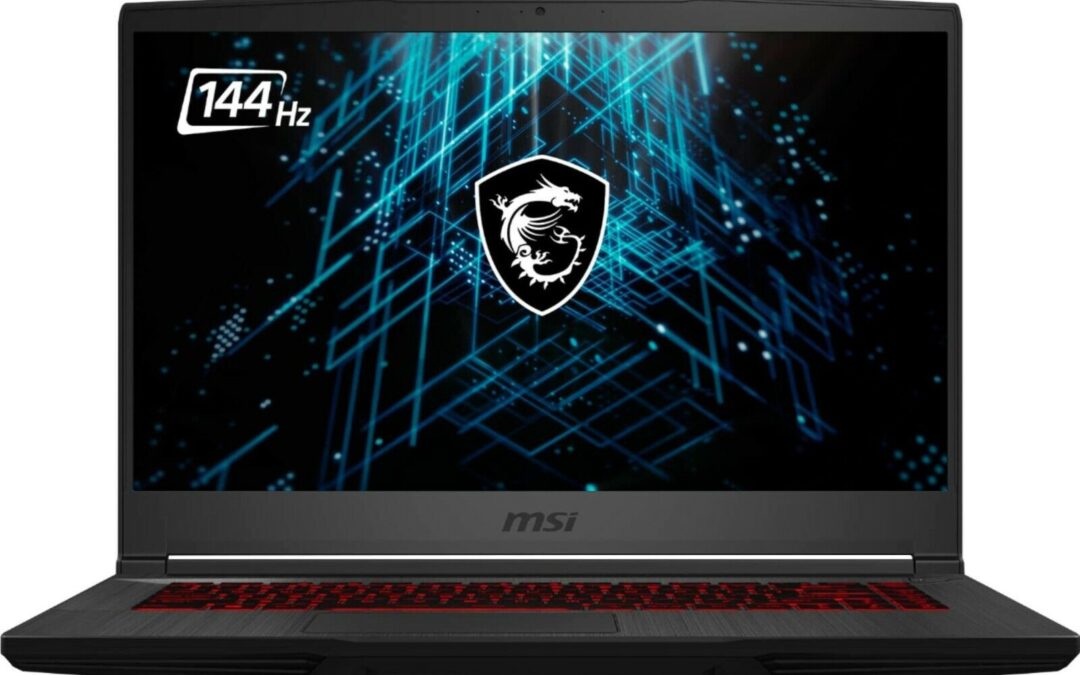A 144Hz laptop is a laptop that has a display with a refresh rate of 144Hz. The refresh rate is the number of times per second that the image on the screen is updated. A higher refresh rate means that the image on the screen will be updated more frequently, resulting in a smoother and more responsive visual experience. This is especially important for gamers, as it can make a significant difference in terms of gameplay quality and immersion.
One of the main benefits of a 144Hz laptop is the increased frame rate. With a higher refresh rate, the laptop can display more frames per second, which results in a smoother and more fluid visual experience. This can be especially noticeable in fast-paced games, where a higher frame rate can make a big difference in terms of gameplay quality and immersion.
Another benefit of a 144Hz laptop is the reduced input lag. Input lag is the amount of time it takes for a command from the user to be processed and displayed on the screen. With a higher refresh rate, the laptop can process and display commands more quickly, which results in less input lag. This can be especially beneficial for gamers, as it can make the game more responsive and improve the overall gaming experience.
When looking for a 144Hz laptop, it’s important to consider the other specifications of the laptop as well. A powerful processor and graphics card are essential for running games at high frame rates, and a high-resolution display can also make a big difference in terms of visual quality. Additionally, it’s important to consider the battery life and portability of the laptop, as these can also be important factors for some users.
Here is our top 10 list of 144hz laptops.
However, I can provide you with the general specs of the laptops in the list:
- ASUS ROG Zephyrus S GX701: Intel Core i7-10875H/i9-10980HK, NVIDIA GeForce RTX 3080/3070, 32GB/64GB DDR4 RAM, 1TB/2TB SSD, 17.3-inch FHD/UHD IPS panel, 144Hz refresh rate, G-Sync, Windows 10, starting price around $2,499
- Alienware m15 R4: Intel Core i5-11300H/i7-11375H, NVIDIA GeForce RTX 3060/3070/3080, 16GB/32GB DDR4 RAM, 512GB/1TB SSD, 15.6-inch FHD/QHD IPS panel, 144Hz refresh rate, G-Sync, Windows 10, starting price around $1,499
- Razer Blade Pro 17: Intel Core i7-10875H/i9-11900H, NVIDIA GeForce RTX 3070/3080, 16GB/32GB DDR4 RAM, 512GB/1TB/2TB SSD, 17.3-inch FHD/UHD IPS panel, 144Hz refresh rate, G-Sync, Windows 10, starting price around $2,399
- MSI GE66 Raider: Intel Core i7-10870H/i9-11900H, NVIDIA GeForce RTX 3070/3080, 16GB/32GB DDR4 RAM, 512GB/1TB/2TB SSD, 15.6-inch FHD/UHD IPS panel, 144Hz refresh rate, G-Sync, Windows 10, starting price around $1,999
- Acer Predator Triton 500: Intel Core i7-11800H/i9-11900H, NVIDIA GeForce RTX 3060/3070/3080, 16GB/32GB DDR4 RAM, 512GB/1TB SSD, 15.6-inch FHD IPS panel, 144Hz refresh rate, G-Sync, Windows 10, starting price around $1,499
- ASUS ROG Strix G15: Intel Core i7-10870H/i9-11900H, NVIDIA GeForce RTX 3070/3080, 16GB/32GB DDR4 RAM, 512GB/1TB/2TB SSD, 15.6-inch FHD/UHD IPS panel, 144Hz refresh rate, G-Sync, Windows 10, starting price around $1,699
- Dell G5 15: Intel Core i7-11800H/i9-11900H, NVIDIA GeForce RTX 3060/3070/3080, 16GB/32GB DDR4 RAM, 512GB/1TB SSD, 15.6-inch FHD IPS panel, 144Hz refresh rate, G-Sync, Windows 10, starting price around $1,449
- Gigabyte Aero 15: Intel Core i7-10875H/i9-11900H, NVIDIA GeForce RTX 3070/3080, 16GB/32GB DDR4 RAM, 512GB/1TB/2TB SSD, 15.6-inch FHD/UHD IPS panel, 144Hz refresh rate, G-Sync, Windows 10, starting price around $1,999
- Lenovo Legion Y740: Intel Core i7-9750H/i7-10875H/i9-10980HK, NVIDIA GeForce RTX 2070/3070/3080, 16GB/32GB DDR4 RAM, 512GB/1TB/2TB SSD, 15.6-inch FHD/UHD IPS panel, 144Hz refresh rate, G-Sync, Windows 10, starting price around $1,799
- 10. HP Omen 15: Intel Core i7-11800H/i9-11900H, NVIDIA GeForce RTX 3060/3070/3080, 16GB/32GB DDR4 RAM, 512GB/1TB SSD, 15.6-inch FHD IPS panel, 144Hz refresh rate, G-Sync, Windows 10, starting price around $1,449 Please note that prices and specs are subject to change and may vary depending on the region and the specific configuration of the device.
In conclusion, a 144Hz laptop is a great option for gamers and those who want a smooth and responsive visual experience. With a higher refresh rate, the laptop can display more frames per second and reduce input lag, resulting in a more immersive and enjoyable gaming experience. When looking for a 144Hz laptop, it’s important to consider the other specifications of the laptop, such as the processor and graphics card, the resolution and overall portability. With the right combination of features, a 144Hz laptop can be a great choice for gamers and anyone looking for a high-performance device.

